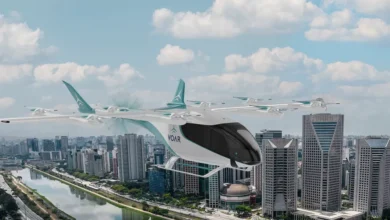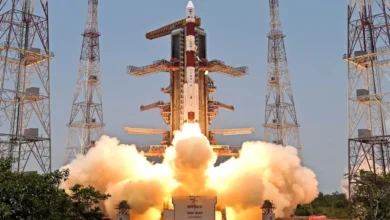Anant Ambani’s glitzy wedding highlights India’s ‘missing middle class’

Ten million dollars to fly Justin Bieber to India’s financial capital Mumbai for an evening’s performance.
An 800-guest cruise around the Mediterranean costing $150m.
A wedding ceremony featuring hundreds of guests and a price tag upwards of $600m.
These are just some of the numbers that have been bandied about in thinly sourced, speculative reports about how much India’s richest man may have splashed on the wedding celebrations of his youngest child.
Anant Ambani, the son of tycoon Mukesh Ambani, married his longtime girlfriend Radhika Merchant in a lavish ceremony held from July 12 to 14 that set tongues wagging in India and further afield.
The elder Ambani, the chairman of conglomerate Reliance Industries, has an estimated net worth of $120.3bn, making him the 11th richest person in the world, according to Forbes.
If true, the wedding’s rumoured sticker price of $600m would be equivalent to 0.5 percent of Ambani’s estimated wealth.
While weddings in India are typically lavish affairs – with people across income brackets often spending beyond their means – the sheer opulence of the Ambanis’ celebrations has drawn attention to the South Asian country’s growing wealth divide.
While India’s rich are getting richer, most Indians, including the middle classes often held up as an example of the country’s economic success in recent years, are muddling on.
Compared with fellow rising economy China, India’s consumers have far less spending power, with the country’s middle class heavily concentrated at the lower end of the income spectrum, according to a report released by Oxford Economics in May.At approximately 460 million, India’s middle class has grown tenfold in the past 30 years. But it is still less than half the size of China’s, according to Oxford Economics, even though the countries share a similar population of about 1.4 billion.
In 2022, at least 660 million Chinese adults earned more than $10,000 per year, whereas only about a quarter of Indians earned as much, according to the report.
Economist Thomas Piketty has famously described India as having a “missing middle class”.
In 2022, average middle-class incomes in India were less than one-third as high as in China, despite starting from a similar base in the 1990s, according to Oxford Economics.
The middle 40 percent in China earned $30,400 pre-tax on average in 2022, compared with $8,700 for their Indian counterparts, according to Oxford Economics.
“One of the reasons behind the relatively quicker rise in China’s middle-income class is likely its relatively rapid urbanisation,” Alexandra Hermann, the lead economist at Oxford Economics, told Al Jazeera.
In China, government policies have successfully encouraged rural-to-urban migration, Hermann said.
India, however, faces a set of challenges that makes Indians less able or willing to migrate.
One is ease of movement.
Large distances, combined with limited transportation infrastructure and strong linguistic differences across states, complicate internal migration, Hermann said.
The other is a lack of social welfare, which makes poor Indians want to stay close to caste networks that provide some of that support informally.
India’s middle- and lower-middle classes contracted after the COVID-19 pandemic, despite the country’s strong economic rebound, said Michael Kugelman, the director of the South Asia Institute at the Wilson Center.
These classes are also “deleteriously impacted by recent inflation” – which was hovering around 5.08 percent in June, up from 4.75 percent in the previous month – Kugelman said, adding that the “significant” inflation and the unrelenting challenge of unemployment have hurt this section of the country.
“Joblessness impacts young people disproportionately in India, and with the country demographically dominated by young people, there will naturally be many people in the lower and middle classes that are affected,” Kugelman told Al Jazeera.
India also has entitlement programmes at the state level that act as an impediment to rural-to-urban and inter-state migration, Hermann said.
Growing India’s middle class will require a shake-up in the income distribution, overall income growth, or a combination of both, Hermann said.
“In India, progress on various reforms to create employment outside of agriculture will be crucial to raise incomes broadly and unlock the population’s spending power,” she said.










